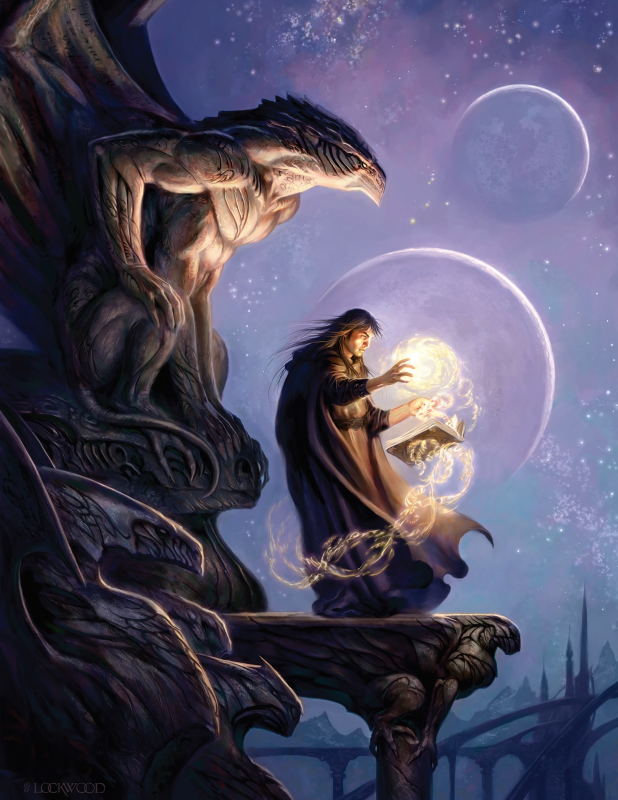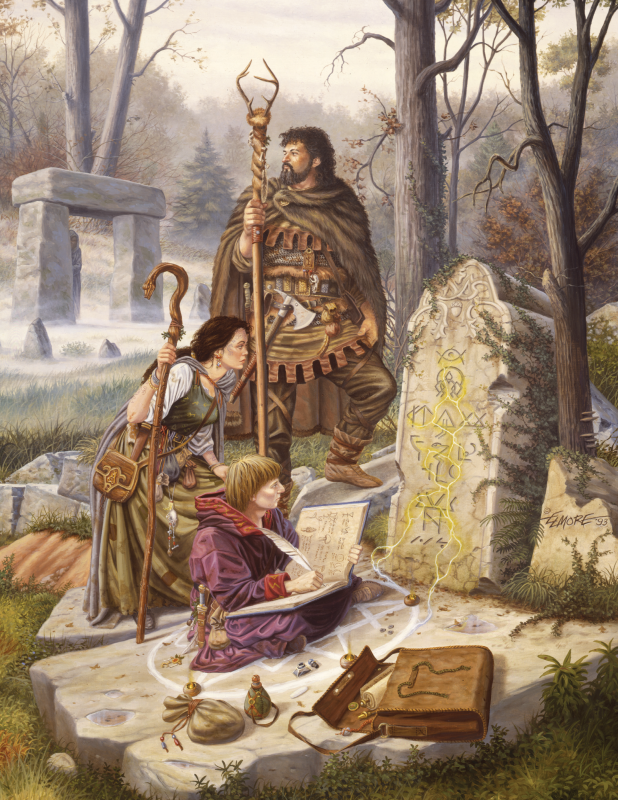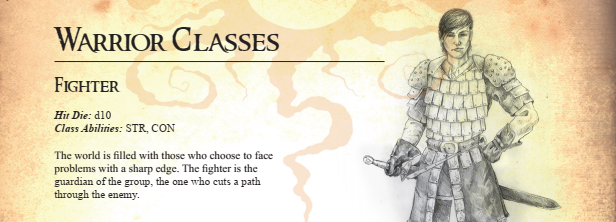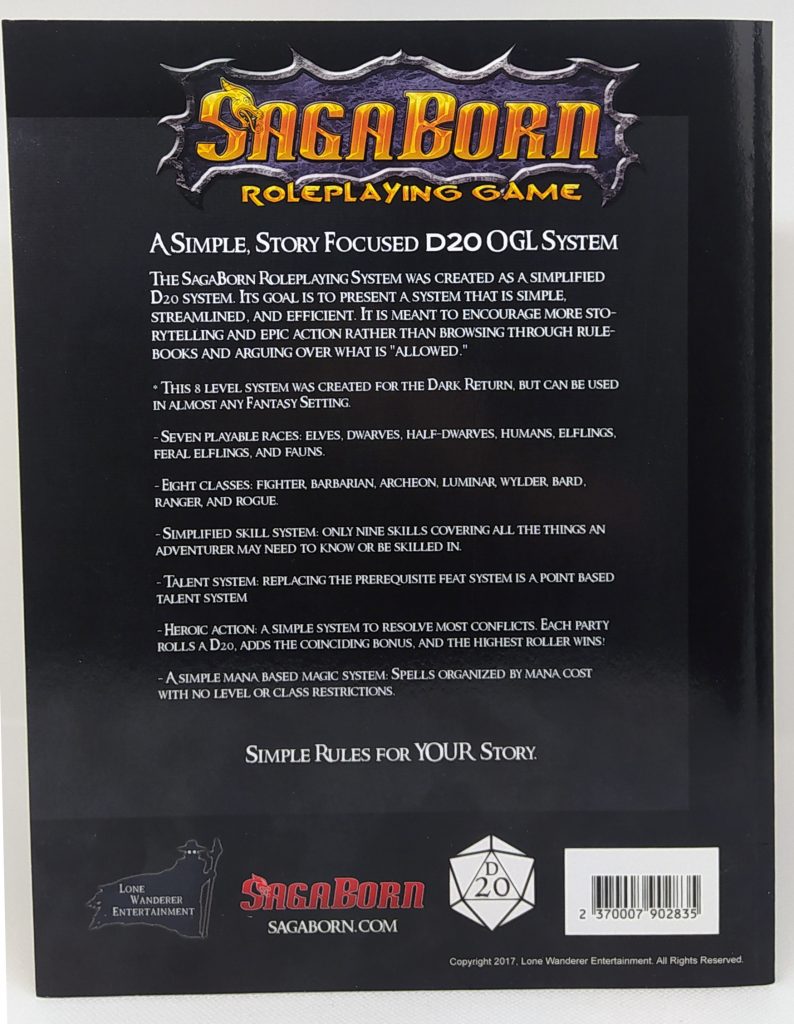We thank Lone Wanderer Entertainment and the authors Michael Bielaczyc and Brian Cooksey for sending us a physical copy of the basic manual of Sagaborn Roleplaying Game in order to write this review. Sagaborn is a system created by simplifying the d20 system and it was born to enrich and enhance action and narration by avoiding slowdowns caused by too many rules.
For those interested in purchasing the physical copy, it is sold at $19,99 (about 16€); the digital copy is free, both available in the Sagaborn official site. It’s also possible to download the beta version 1.5. Or you can find it on DrivethruRPG.com at $24.99 (about 21€) for the physical version and with the pay-what-you-want option for the digital one. An unusual choice, but certainly appealing.
The Authors of Sagaborn

Sagaborn was born for Dark Return, a gothic fantasy setting created by Michael Bielaczyc and Dane Clark Collins.
Michael is an artist who worked on titles like Dragonlance and Castlemourn. In 2002 he founded Aradani Studios, an tudio that deals with graphics, from design to costumes to prosthetics. Dane is a writer and author for Lone Wanderer Entertainment, for whom he also edited some of the Sagaborn content.
Brian Cooksey is an RPG designer with forty years of experience. Obviously the Sagaborn team is much larger and you can find them all in the website.
It all started with Michael’s desire to create his own game system. During a GenCon he asked to collaborate with Brian, and within a few years Sagaborn came to light.
Review of Sagaborn Roleplaying Game

Sagaborn is a system based con the D20 system like Dungeons & Dragons or Pathfinder, but it has gone through a process of simplification. Let’s start with some numbers. It has 8 levels, 7 races and 8 classes. There are 9 skills.
Classes are functional to the setting. The martial ones, in addition to the warrior and the barbarian, include the archeon, the watchers of the mages. The magical ones include the bard, the wylder (a wild mage), and the luminar, the officially educated wizard. Lastly the ranger and the rogue complete the possibilities.
Among the races, in addition to the more classic humans, dwarves and elves, there are the much less classic half-dwarves, the fauns, and the elflings, civilized orferal ones. They are races rooted in the history of Atheles, the continent of the Dark Return setting.
Character creation is regulated by a point-based system quite simple and rather free. You allocate points for attributes, skills and talents. You roll the gold pieces available for the equipment and then add a custom object, called a Legacy Item, which I will talk about later.
Then all the rules of the system are condensed into 15 pages. What isn’t regulated is handled at the table with the aim of keeping the narrative flowing. The remaining manual is occupied by spells, the most famous and well-known by icosahedron-rollers all over the world.
Some Differences between Sagaborn and the D20 System

Simplification is not just about cutting and removing. There are substantial differences between the system that inspired it and the Sagaborn Roleplaying Game itself.
Among the most important:
- Leveling occurs at the discretion of the GM, who is given guidelines for the appropriate number of encounters per level for advancement (fifty encounters from the penultimate to the last level make for quite a quest!)
- As the characters progress, they are provided with special items, called Legacy Items. These are objects that have a story connected to the character and that story is revealed over time, along with the progress of the powers of the item itself. During the 8 levels, 3 will be assigned.
- Magic is based on a Mana Pool. The minimum mana cost of a spell is equal to its level, but spending more mana increases the spell’s power. Magic is risky, it can incur dangerous consequences for the caster and those around him, even for trying to cast spells when out of mana points.
Review of the Aesthetics of Sagaborn Roleplaying Game

Sagaborn Roleplaying Game has a simple system, and this nature is reflected in the layout and aesthetics, too. Parchment-colored pages enriched by embellishment at the top give the feel of an ancient tome. The layout is basic double column with simple tables.
The art mainly consists of small black and white images of varying quality, sometimes a bit amateurish. However, there are full-page images, too, and often in color. The latter are focused on character design, have significantly better quality, and a vintage style.
Final Consideration of the Review of Sagaborn Roleplaying Game

Every role-player has their own taste. There are those who love games full of rules that cover every situation, and those who prefer more minimalist games. Sagaborn Roleplaying Game offers a simple alternative, based on a known and proven system, made particularly light. Those who don’t want to drive themselves crazy flipping between pages, text boxes and tables won’t have to. The players must also accept the abstraction and tendency towards narrative play, however.
Ultimately Sagaborn Roleplaying Game does not offer anything particularly new, original or unmissable. It has a very specific target; those interested in its characteristics or those who want to play the adventures or the setting for which it was born. These folk will appreciate it. The free digital version makes the product attractive and allows for a complete personal evaluation.

